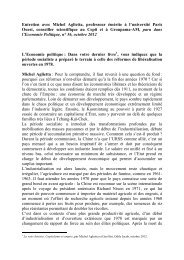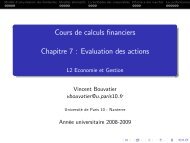Does the Entry Mode of Foreign Banks Matter for Bank ... - EconomiX
Does the Entry Mode of Foreign Banks Matter for Bank ... - EconomiX
Does the Entry Mode of Foreign Banks Matter for Bank ... - EconomiX
Create successful ePaper yourself
Turn your PDF publications into a flip-book with our unique Google optimized e-Paper software.
Thus, we have had to track <strong>the</strong> evolution in <strong>the</strong> ownership <strong>of</strong> each bank over time throughseveral sources, including banks’ <strong>of</strong>ficial publications and Zephyr (Bureau Van Dijk) 13 .This enabled us to differentiate between <strong>for</strong>eign and domestic banks, and, among <strong>for</strong>eignbanks, between greenfield investments and merger and acquisition entries.Table 3 displays summary statistics <strong>of</strong> <strong>the</strong> sample. We observe clear differencesbetween <strong>the</strong> categories <strong>of</strong> banks. In terms <strong>of</strong> size, <strong>the</strong> mean M&A bank is approximatelysix times bigger than a greenfield bank and two times bigger than a domestic bank. Interms <strong>of</strong> <strong>the</strong> structure <strong>of</strong> activities, <strong>the</strong> volumes <strong>of</strong> investment assets hold by M&As anddomestic banks are much higher than that <strong>of</strong> greenfield banks. In fact, <strong>the</strong> <strong>for</strong>mer tend toinvest massively on government securities with higher returns and lower risk, ra<strong>the</strong>r thanmake loans in a context <strong>of</strong> difficulties in identifying high-quality new clients, <strong>of</strong> <strong>the</strong>nascent stage <strong>of</strong> institutional infrastructure supporting property and creditors’ rights, andin<strong>for</strong>mation asymmetries. As an example, in Poland, government securities comprisedover 25% <strong>of</strong> <strong>Bank</strong> Slaski’s total assets at <strong>the</strong> end <strong>of</strong> 1995 (Abarbanell & Bonin, 1997, p.53). This feature is also confirmed by Havrylchyk (2006, p. 10). M&As and domesticbanks also possess much higher volumes <strong>of</strong> loans than Greenfields. There<strong>for</strong>e, <strong>the</strong>difference in <strong>the</strong> relative ratio <strong>of</strong> investment assets over loans becomes much narrower.6. ResultsWe report our results by first comparing <strong>for</strong>eign banks against domestic banks tosee if our results are in line with <strong>the</strong> existing empirical evidence. We <strong>the</strong>n turn our focusto <strong>the</strong> comparative efficiency <strong>of</strong> Greenfields versus M&As, and <strong>of</strong> M&As versusdomestic banks. The parameter estimates from <strong>the</strong> translog cost functions 14 by<strong>the</strong>mselves have little in<strong>for</strong>mational value; <strong>the</strong>y are simply means to <strong>the</strong> end <strong>of</strong> producinga frontier with which to estimate bank-specific cost efficiency scores. Of more interestare <strong>the</strong> coefficient estimates from <strong>the</strong> inefficiency models, which show <strong>the</strong> impact <strong>of</strong> <strong>the</strong>particular variables on bank cost inefficiency.6.1 <strong>Foreign</strong> <strong><strong>Bank</strong>s</strong> versus Domestic <strong><strong>Bank</strong>s</strong>13 We are grateful to R.d. Haas and I.v. Lelyveld from de Nederlandsche <strong>Bank</strong> <strong>for</strong> kindly sharing data onbank ownership <strong>for</strong> <strong>the</strong> years 1994 to 2001.14 Results are available from <strong>the</strong> authors upon request.-26-




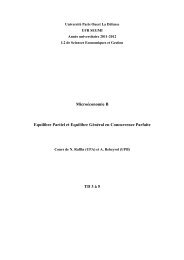

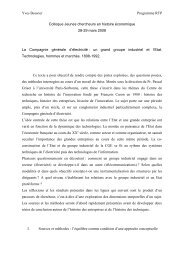
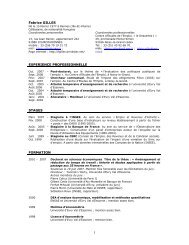
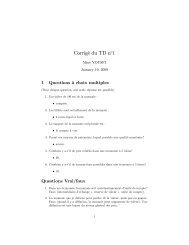
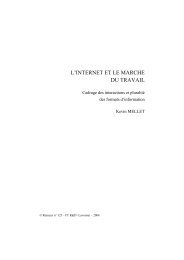
![P * 1 JTZWL_TZY OP^ Sd[Z_Sl^P^ !=m_m]Z^NmOL ... - EconomiX](https://img.yumpu.com/42226403/1/190x143/p-1-jtzwl-tzy-op-sdz-slp-m-mznmol-economix.jpg?quality=85)
